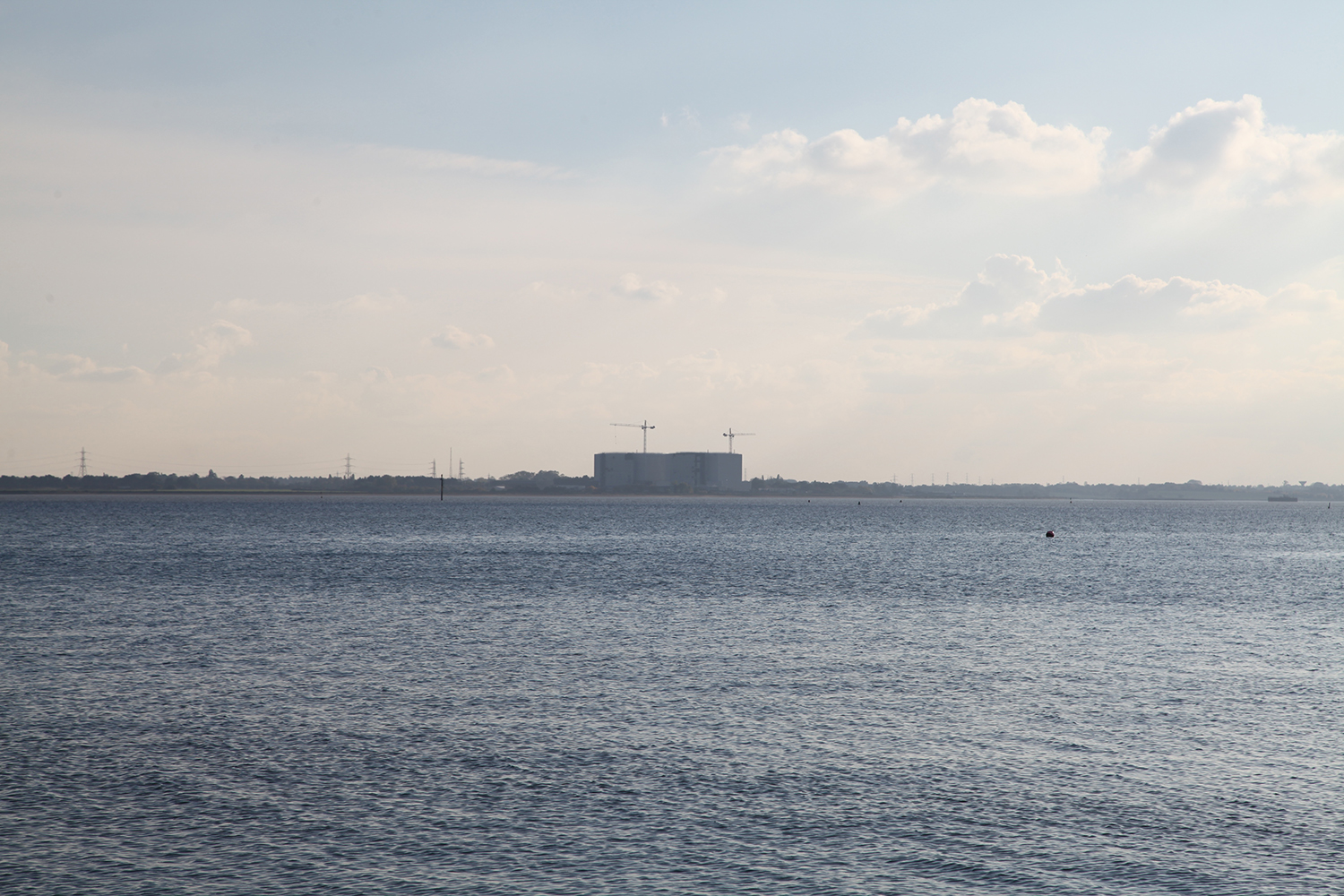Takeichi Saito has been measuring the temperature of the sea in his home town of Iwanai, nearby Tomari Nuclear Power Station, for 40 years; situated on the western coast of Hokkaido, Japan. His aims are to monitor the thermal discharge
from the power station and its impact on his hometown’s fishing industry. We first met him outside the Tomari Nuclear Power Station Visitor Centre. Saito is 64 years old, he had his thermometer hung around his neck in a homemade holster and was wrapped up warm in preparation to take today’s reading just a short car journey away.
‘His aims are to monitor the thermal discharge from the power station and its impact on his hometown’s fishing industry.’
When we arrived the wind was forceful and as we started to walk out onto the large concrete jetty the water was crashing against the sea walls, throwing up foam and spray. Saito, on his knees and lowering a container down into the water with rope, made it look so easy retrieving the sample, even in such conditions. Going through this process with Saito foregrounded the commitment he has made and the risks he takes; such a daily undertaking is dangerous work. According to his monitoring Saito sees an overall increase in the water’s temperature, and he argues this is due to the thermal discharge from the power station. This encounter urged us to consider further the approaches of disseminating information relative to the nuclear industry and its impacts.
‘According to his monitoring Saito sees an overall increase in the water’s temperature, and
he argues this is due to the thermal discharge from the power station.’
After this we had lunch at a local restaurant and then went back to Saito’s home where he gave us two lectures, the first on the Tomari Nuclear Power Station more generally and the second on the nuclear and its correlation with cancer rates. He illustrates what he is saying with bold, handmade slides. Each talk begins with a round of applause before he presents the problems he sees due to the nuclear industry. We sit, listen intently whilst drinking tea and eating mochi. Saito used to be a kindergarten teacher and this is made clear through his methods. He feels that throughout his life he has taken much from the sea and wants to give something back. Before we leave we look through his folders of measurements over the last forty years, on the day I was born the water was 12.6ºC, it was raining and cloudy.
‘He feels that throughout his life he has taken much from the sea and wants to give something back.’
 Takeichi Saito giving a presentation at his home, Iwanai, Hokkaido, Japan. Image: IROPI
Takeichi Saito giving a presentation at his home, Iwanai, Hokkaido, Japan. Image: IROPI
Institute for the Recognition of Peripheral Interests’ (IROPI) is a project initiated by Warren Harper and James Ravinet. Applying artistic and curatorial research as methods of enquiry IROPI begins with the peripheral communities and ecologies affected by the nuclear industry and its legacy. This time last year IROPI was on a research residency to Japan, in an attempt to experience first-hand how another island nation reflects upon, relates and reacts to nuclear power production and consumption as well as the storage of its waste and how communities can produce or utilise alternative methods of energy.
‘This time last year IROPI was on a research residency to Japan, in an attempt to experience first-hand how another island nation reflects upon, relates and reacts to nuclear power production and consumption.’
Now back in the UK, IROPI’s enquiry focuses on the Blackwater Estuary, Essex; a microcosm of complex issues around history, heritage, ecology and the geo-politics of energy production, consumption and subsequent ‘disposal’. It is home to one of the UK’s first generation of nuclear power stations; the Othona Community who produce 75% of their own electricity and have their own reed bed sewage system; St. Peter-on-the-Wall, Britain’s 19th oldest building; and off the coast is the London Array, the largest offshore wind farm in the world. The area is also set to become a regional nuclear waste store for Intermediate Level Waste (ILW) from Dungeness and Sizewell, and China General Nuclear Power Group and China National Nuclear Corporation alongside EDF Energy are considering Bradwell for the site of a new nuclear power station.
Now back in the UK, IROPI’s enquiry focuses on the Blackwater Estuary, Essex; a microcosm of complex issues around history, heritage, ecology and the geo-politics of energy production, consumption and subsequent ‘disposal’.
It is clear that the arrangement of humans and non-humans, historical sites and important ecologies within the area should be considered when thinking about and acting upon the planning and implementation of the infrastructure of nuclear power production and storage. The development of curatorial and artistic methods ‘in the field’ enables new ways of highlighting current discourses around the nuclear in the region and the multiplicities of actors and forms of knowledge that run through as well as inhabit it. On the first days of our residency in Japan we had the pleasure to stay with Kuse Shigetsugu, a dairy farmer and nuclear activist from Toyotomi, in the northern tip of Hokkaido. He urged us to ‘think global and act local’, and this is something constantly borne in mind throughout the IROPI project. We both live nearby the Blackwater Estuary, only 15 miles as the crow flies, so this all feels very close to home.
‘’He urged us to ‘think global and act local’’
To find out more about the project visit www.iropi.org
 Blackwater Estuary, Essex, UK. Image: IROPI
Blackwater Estuary, Essex, UK. Image: IROPI
